A Reference Voltage Self-Correction Method for Capacitor Voltage Offset Suppression of Three-Phase Four-Switch Inverter-Fed PMSM Drives
Abstract
:1. Introduction
2. Modeling for the TPFS Inverter-Fed PMSM Drive System
3. Capacitor Voltage Offset Suppression Strategy
3.1. The Influence of TPFS Inverter Capacitor Voltage Offset
3.2. The TPFS Inverter Capacitor Voltage Offset
3.3. Reference Voltage Self-Correction
4. Simulation and Experimental Results
4.1. Introduction to the Experimental Platform
4.2. Experimental Results for Comparision of Control Performance
4.3. Simulation Results of the Capacitor Value Variation
4.4. Simulation Results of Speed Transient
5. Conclusions
- (1).
- The proposed method effectively reduces the torque ripple while keeping the three-phase current and capacitor voltage in balance. Load increase and speed decrease have little effect on the proposed method;
- (2).
- The proposed method does not need voltage sensors or filters to extract the offset components, nor does it require complex parameter adjustment, as the algorithm is simple and easy to implement;
- (3).
- The proposed method will not affect the control performance of the motor when the capacitor value variation and the motor speed are transient.
Author Contributions
Funding
Institutional Review Board Statement
Informed Consent Statement
Conflicts of Interest
References
- Zhu, Y.; Tao, B.; Xiao, M.; Yang, G.; Zhang, X.; Lu, K. Luenberger Position Observer Based on Deadbeat-Current Predictive Control for Sensorless PMSM. Electronics 2020, 9, 1325. [Google Scholar] [CrossRef]
- Lin, Z.; Li, X.; Wang, Z.; Shi, T.; Xia, C. Minimization of additional high-frequency torque ripple for square-wave voltage injection IPMSM sensorless drives. IEEE Trans. Power Electron. 2020, 35, 13345–13355. [Google Scholar] [CrossRef]
- Chen, W.; Zeng, S.; Zhang, G.; Shi, T.; Xia, C. A modified double vectors model predictive torque control of permanent magnet synchronous motor. IEEE Trans. Power Electron. 2019, 34, 11419–11428. [Google Scholar] [CrossRef]
- Kivanc, O.; Ozturk, S. Low-cost position sensorless speed control of PMSM drive using four-switch inverter. Energies 2019, 12, 741. [Google Scholar] [CrossRef] [Green Version]
- Ni, K.; Hu, Y.; Liu, Y.; Gan, C. Performance analysis of a four-switch three-phase grid-side converter with modulation simplification in a doubly-fed induction generator-based wind turbine (DFIG-WT) with different external disturbances. Energies 2017, 10, 706. [Google Scholar] [CrossRef]
- Lu, J.; Hu, Y.; Zhang, X.; Wang, Z.; Liu, J.; Gan, C. High-frequency voltage injection sensorless control technique for IPMSMs fed by a three-phase four-switch inverter with a single current sensor. IEEE Trans. Mech. 2018, 23, 758–768. [Google Scholar] [CrossRef]
- Zeng, Z.; Zhu, C.; Jin, X.; Shi, W.; Zhao, R. Hybrid space vector modulation strategy for torque ripple minimization in three-phase four-switch inverter-fed PMSM drives. IEEE Trans. Ind. Electron. 2017, 64, 2122–2134. [Google Scholar] [CrossRef]
- Zhu, C.; Zeng, Z.; Zhao, R. Comprehensive analysis and reduction of torque ripples in three-phase four-switch inverter-fed PMSM drives using space vector pulse-width modulation. IEEE Trans. Power Electron. 2017, 32, 5411–5424. [Google Scholar] [CrossRef]
- Zhou, D.; Zhao, J.; Liu, Y. Predictive torque control scheme for three-phase four-switch inverter-fed induction motor drives with DC-link voltages offset suppression. IEEE Trans. Power Electron. 2015, 30, 3309–3318. [Google Scholar] [CrossRef]
- Hang, J.; Zhang, J.; Wu, H.; Ding, S. Model predictive control with fixed weighting factor for three-phase four-switch inverter-fed PMSM drives considering capacitor voltage offset suppression. IET Electric. Power Applica 2020, 14, 2697–2706. [Google Scholar] [CrossRef]
- Sun, D.; Su, J.; Sun, C.; Nian, H. A simplified MPFC with capacitor voltage offset suppression for the four-switch three-phase inverter-fed PMSM drive. IEEE Trans. Ind. Electron. 2019, 66, 7633–7642. [Google Scholar] [CrossRef]
- Zeng, Z.; Zheng, W.; Zhao, R.; Zhu, C.; Yuan, Q. Modeling, modulation, and control of the three-phase four-switch PWM rectifier under balanced voltage. IEEE Trans. Power Electron. 2016, 31, 4892–4905. [Google Scholar] [CrossRef]
- Zhu, C.; Zeng, Z.; Zhao, R. Adaptive suppression method for DC-link voltage offset in three-phase four-switch inverter-fed PMSM drives. Electron. Lett. 2016, 52, 1442–1444. [Google Scholar] [CrossRef]
- Yuan, Q.; Zhao, R. DC-link capacitor voltage offset suppression with no filters for three-phase four-switch inverter fed PMSM drives. Electron. Lett. 2017, 53, 751–752. [Google Scholar] [CrossRef]
- Kim, B.; Lee, D. Sensorless control of PMSM by a four-switch inverter with compensation of voltage distortion and adjustment of position estimation gain. J. Electr. Eng. Technol. 2017, 12, 100–109. [Google Scholar] [CrossRef] [Green Version]
- Bolognani, S.; Petrella, R.; Prearo, A.; Sgarbossa, L. Automatic tracking of MTPA trajectory in IPM motor drives based on AC current injection. IEEE Trans. Ind. Appl. 2011, 47, 105–114. [Google Scholar] [CrossRef]
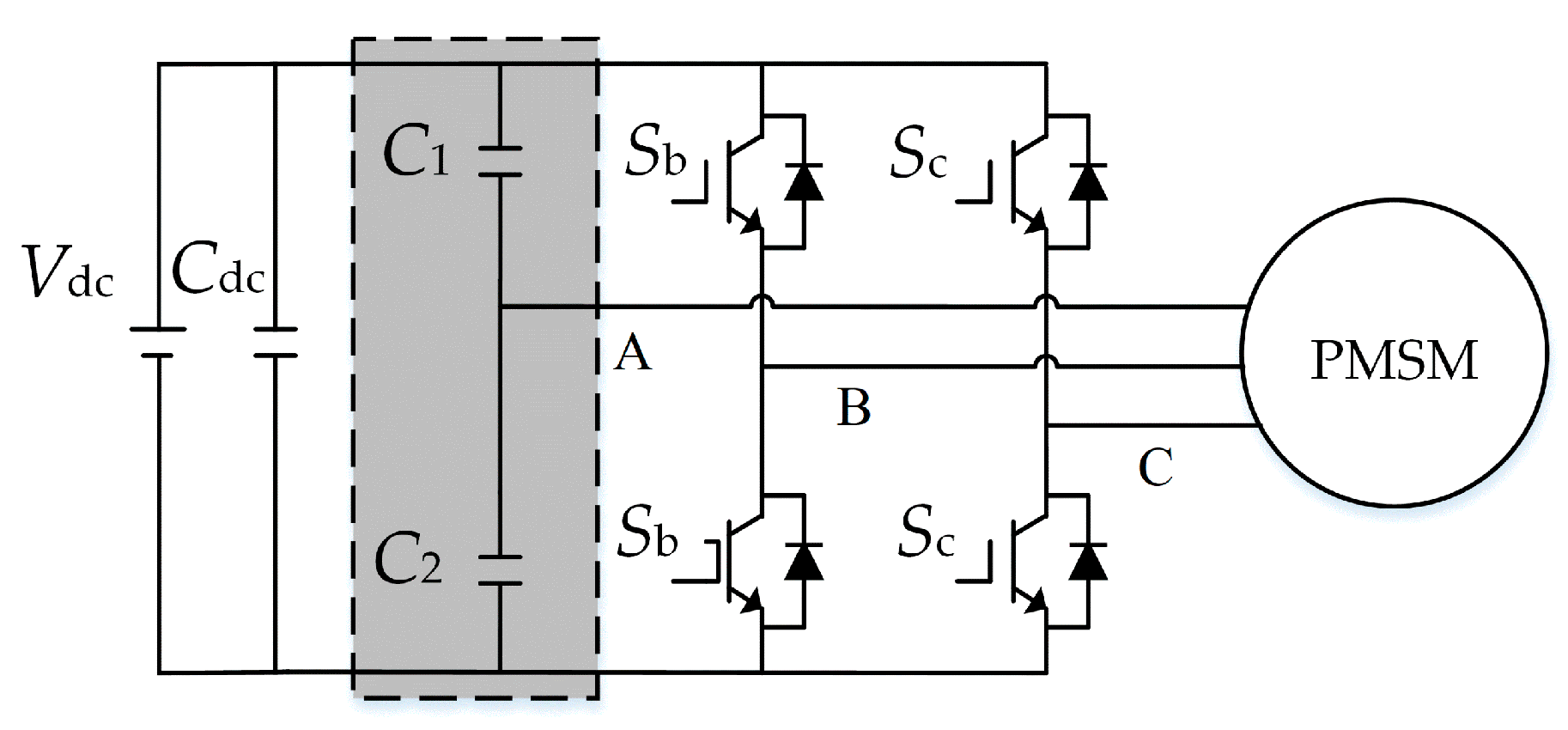
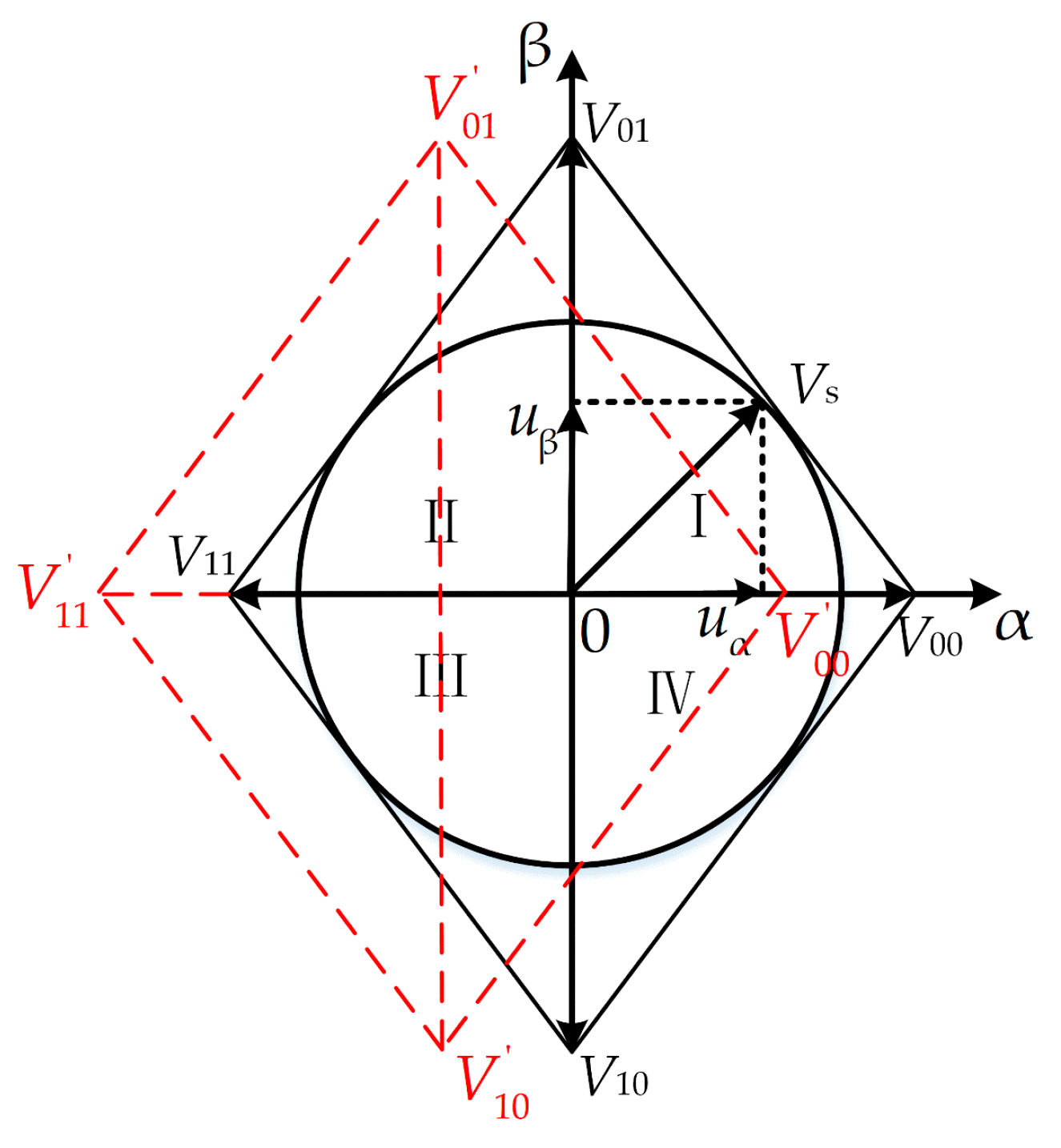
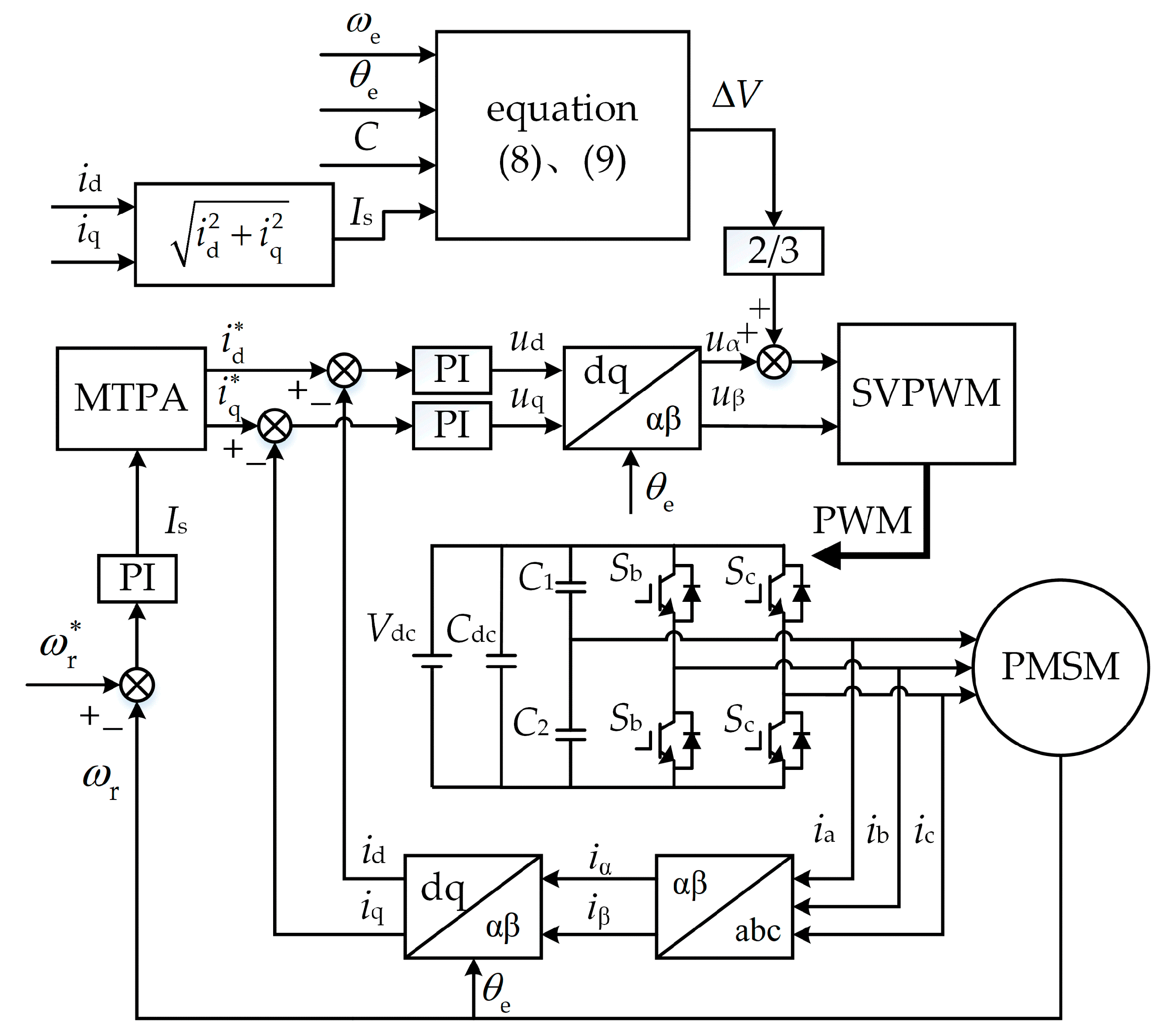
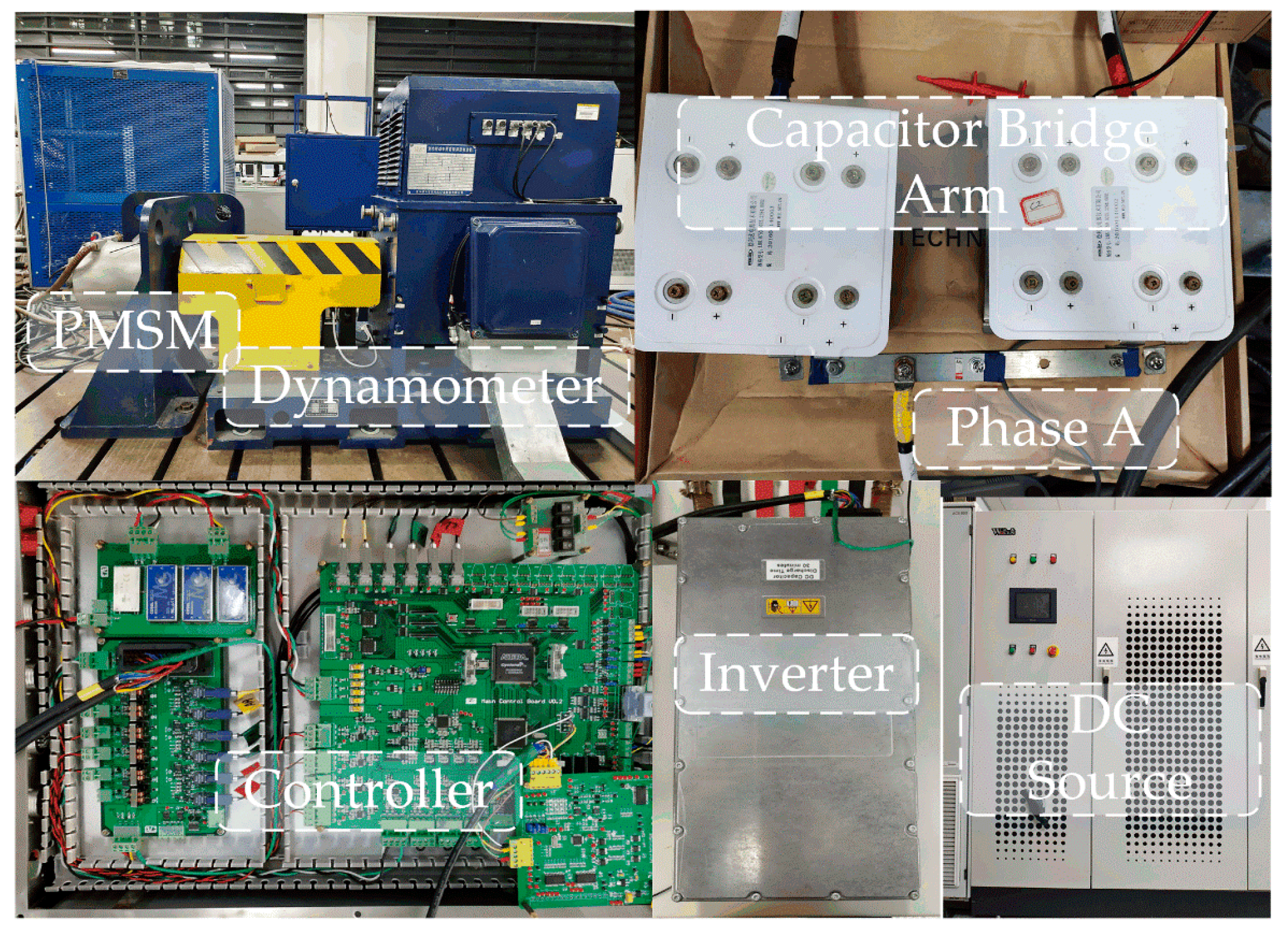
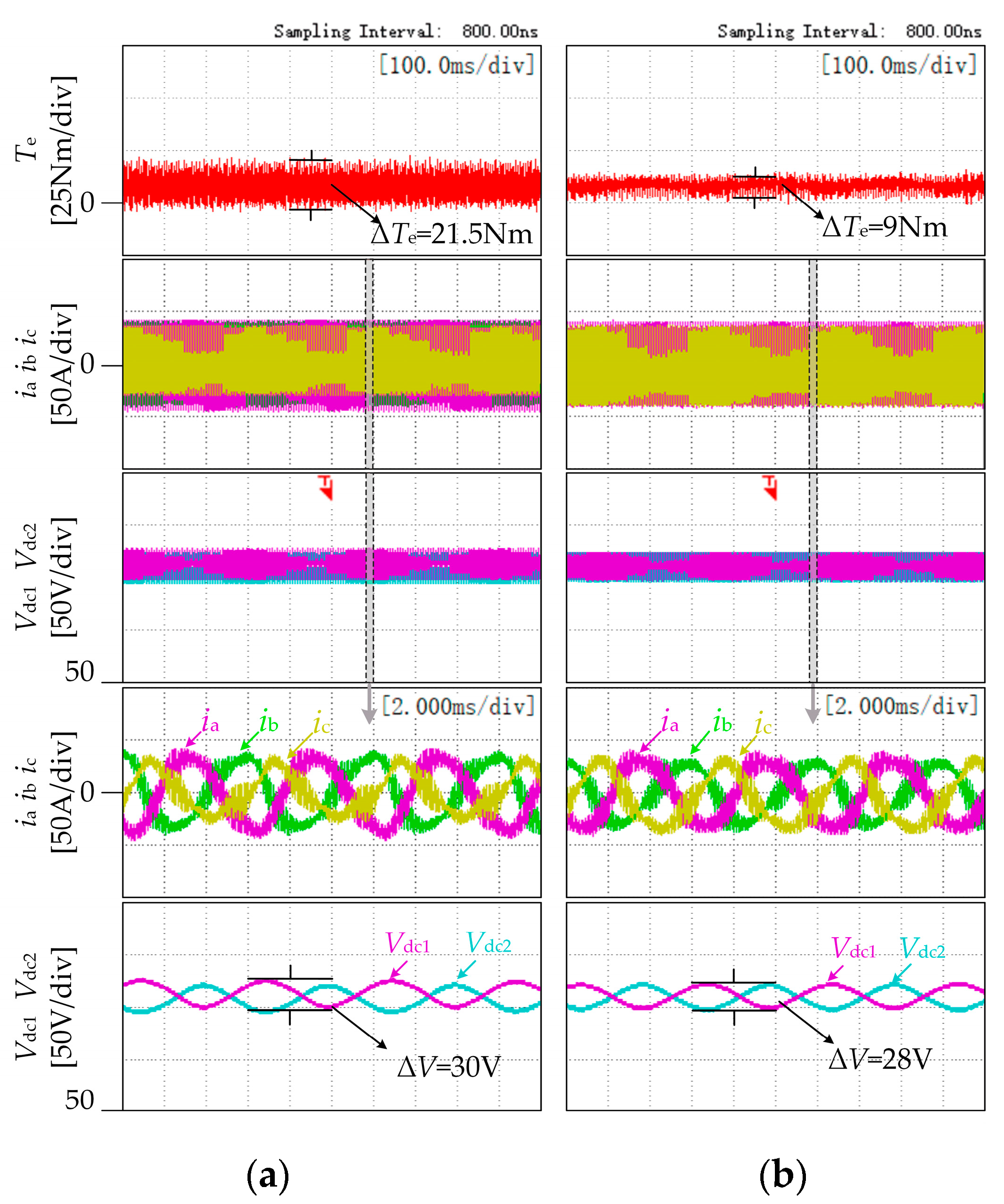
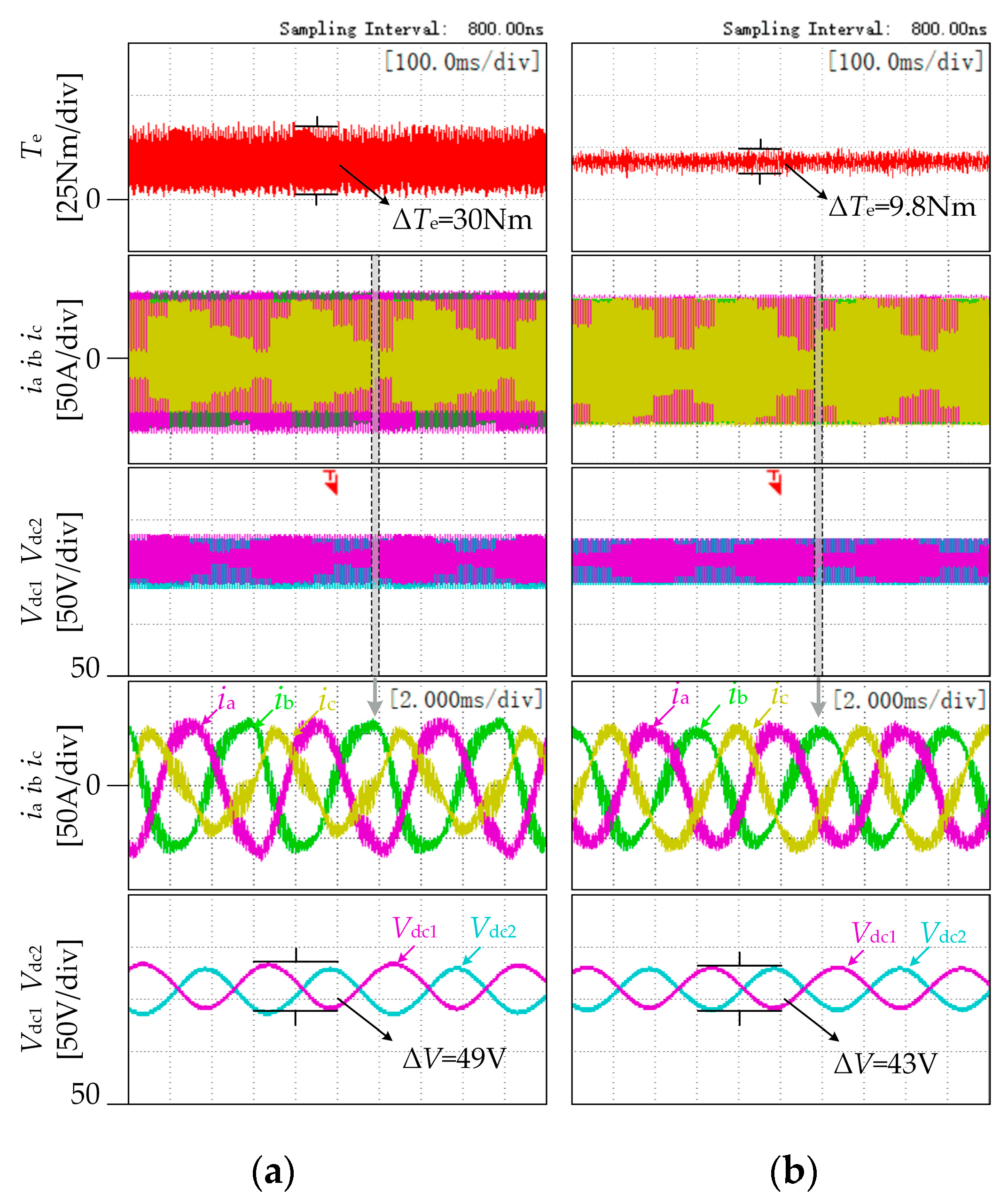



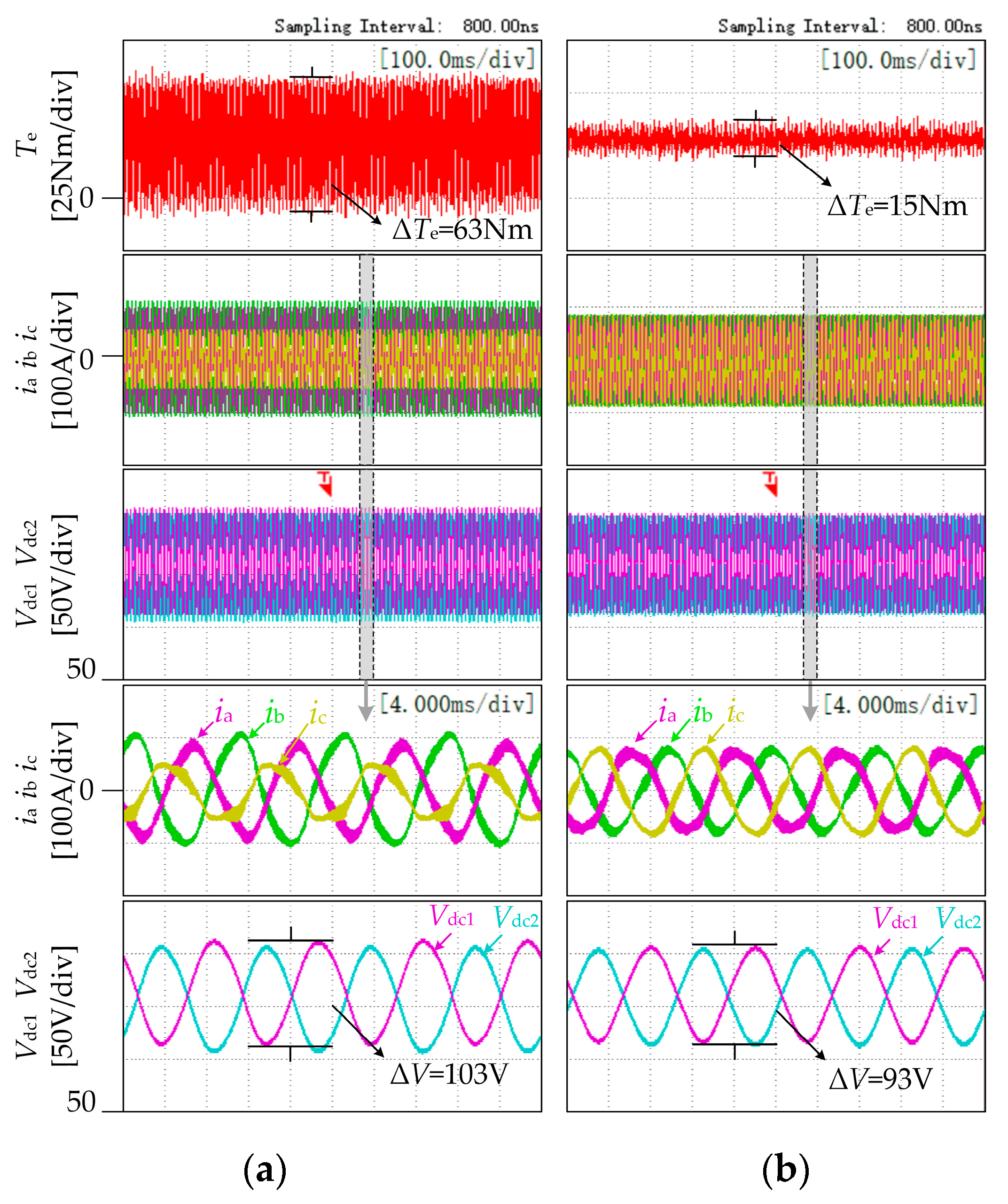

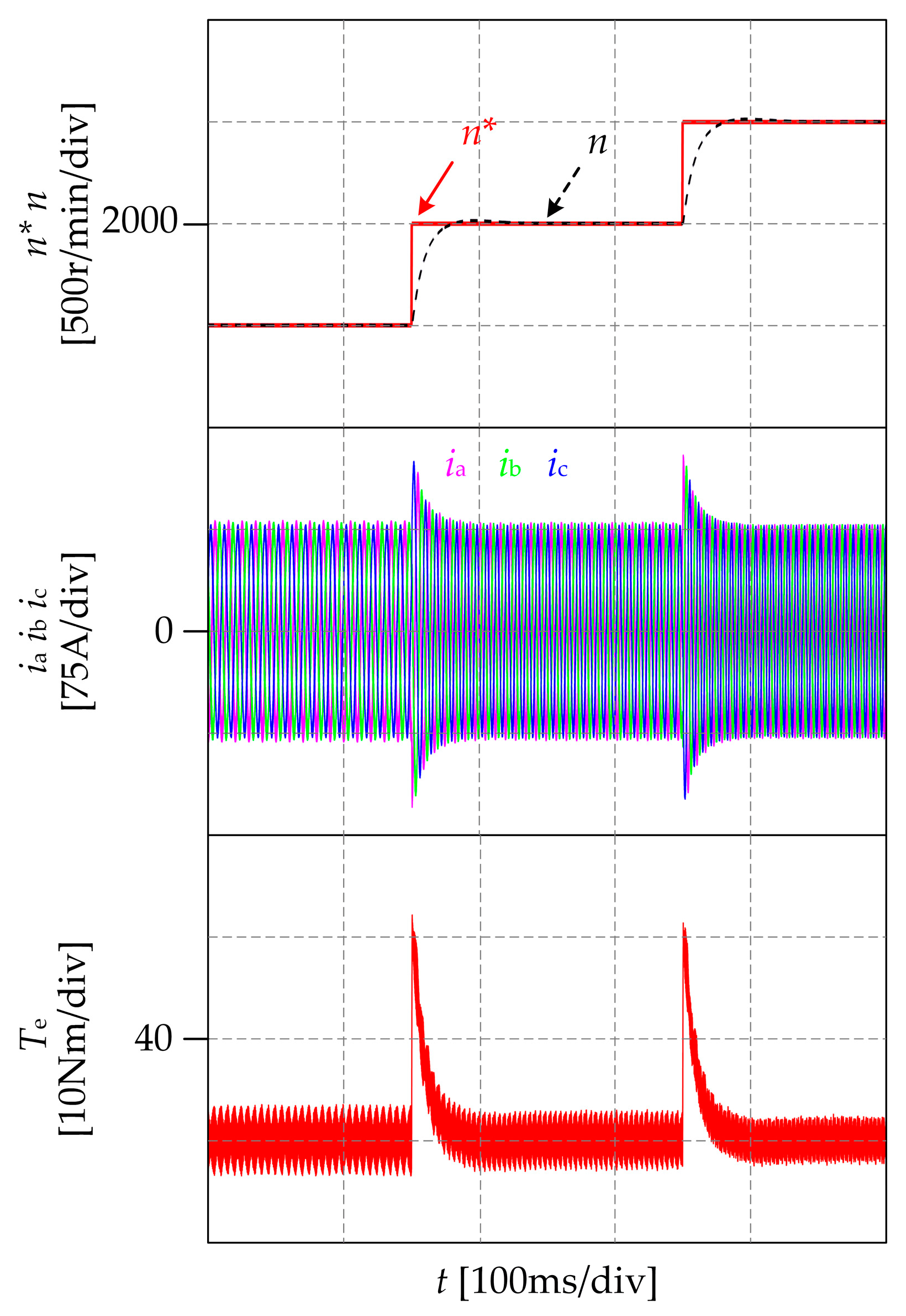
| Parameter | Symbol | Value |
|---|---|---|
| Rated voltage | UN | 320 V |
| Rated current | IN | 150 A |
| d-axis inductance | Ld | 0.158 mH |
| q-axis inductance | Lq | 0.292 mH |
| Stator resistance | Rs | 7.34 mΩ |
| Permanent magnet flux | ψf | 0.067 Wb |
| Rated speed | nN | 3000 r/min |
| Rated torque | TN | 64 Nm |
| Pairs of poles | p | 4 |
Publisher’s Note: MDPI stays neutral with regard to jurisdictional claims in published maps and institutional affiliations. |
© 2022 by the authors. Licensee MDPI, Basel, Switzerland. This article is an open access article distributed under the terms and conditions of the Creative Commons Attribution (CC BY) license (https://creativecommons.org/licenses/by/4.0/).
Share and Cite
Chen, W.; Wang, S.; Li, X.; Zhang, G. A Reference Voltage Self-Correction Method for Capacitor Voltage Offset Suppression of Three-Phase Four-Switch Inverter-Fed PMSM Drives. World Electr. Veh. J. 2022, 13, 24. https://doi.org/10.3390/wevj13020024
Chen W, Wang S, Li X, Zhang G. A Reference Voltage Self-Correction Method for Capacitor Voltage Offset Suppression of Three-Phase Four-Switch Inverter-Fed PMSM Drives. World Electric Vehicle Journal. 2022; 13(2):24. https://doi.org/10.3390/wevj13020024
Chicago/Turabian StyleChen, Wei, Sai Wang, Xinmin Li, and Guozheng Zhang. 2022. "A Reference Voltage Self-Correction Method for Capacitor Voltage Offset Suppression of Three-Phase Four-Switch Inverter-Fed PMSM Drives" World Electric Vehicle Journal 13, no. 2: 24. https://doi.org/10.3390/wevj13020024






